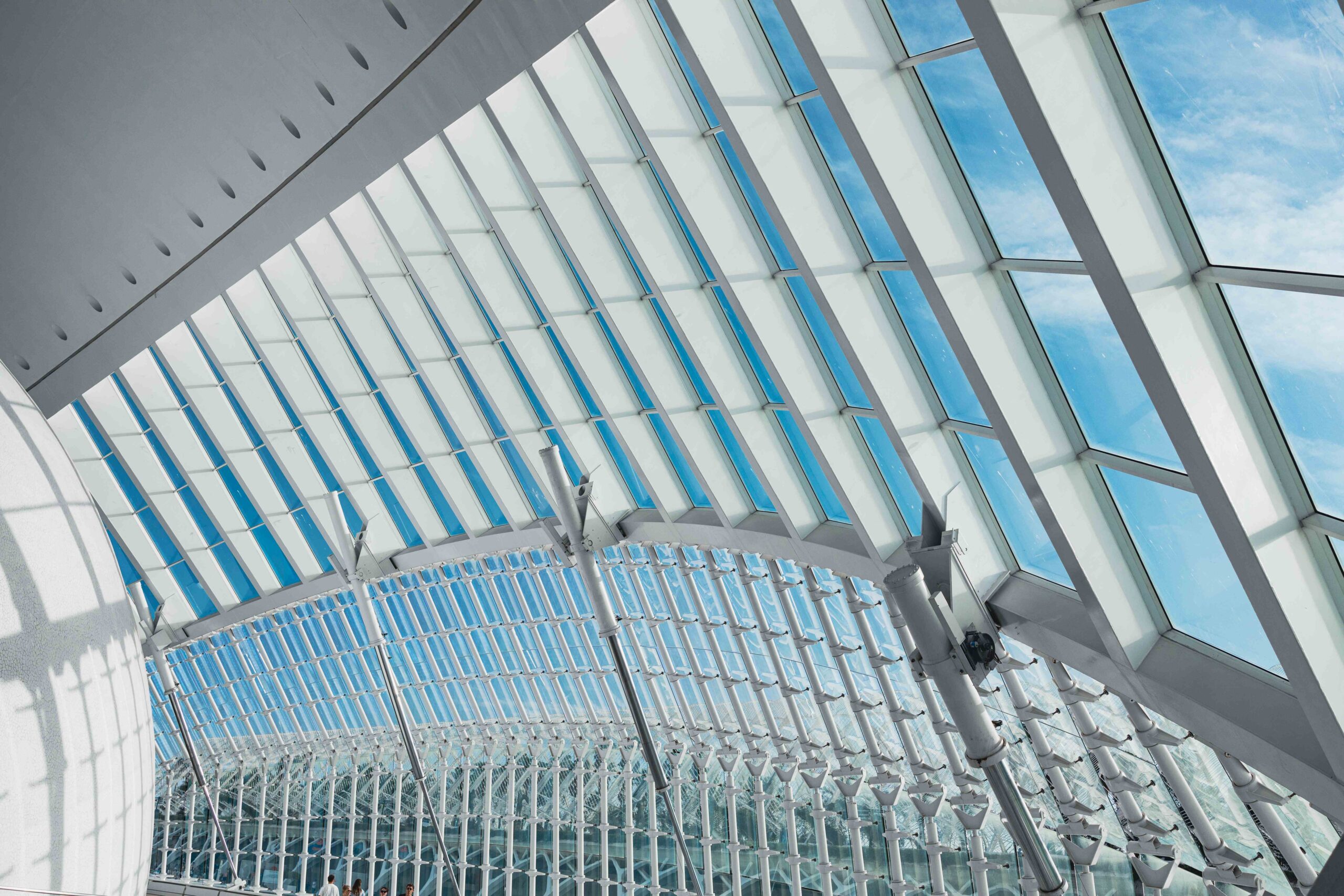Project Background
Set against the Lake Michigan shoreline, the Milwaukee Art Museum is one of Wisconsin’s most distinctive buildings. Its centerpiece — the Burke Brise Soleil — is a wing-shaped, movable sunshade created by Spanish architect Santiago Calatrava. But behind the aesthetics lies a complex interaction of geometry, material science, and mechanical precision.
The Brise Soleil was introduced as part of a major expansion in the early 2000s. The concept was not purely visual. It was grounded in function: regulating sunlight, reducing energy load, and creating a dynamic architectural identity. The structure opens and closes daily, responding to weather conditions — a deliberate integration of form and purpose.
Engineering and Mechanics
The Brise Soleil consists of 72 steel fins, each connected to an overhead spindle structure that allows movement on a fixed arc. The entire wing span stretches over 200 feet. When fully opened, it resembles a bird in flight. But its behavior is guided not by metaphor — but by mechanics.
Motion is powered by hydraulic cylinders calibrated to maintain symmetrical force on both sides. Sensors feed wind speed and direction into the control system. If gusts exceed safety thresholds, the system halts. Stability takes priority.
Each wing weighs approximately 26 tons. Movement takes just over three minutes. Slowly. Predictably. The gear engaged — then paused. Movement resumed. It followed a test sequence: torque verification, balance check, thermal expansion adjustment.
The base pivot points were reinforced using load-distribution bearings, tested under simulated conditions. Engineering documents note tolerances down to the millimeter.
Role of Science in the Design
From concept to execution, the Burke Brise Soleil relied on interdisciplinary science. Structural dynamics, aerodynamics, material fatigue, and kinetic sequencing were considered simultaneously.
Wind tunnel studies were used to predict lift and sway. Data from Lake Michigan’s shoreline wind behavior informed the stress distribution design. Engineers modeled wing performance during temperature fluctuations, identifying potential fracture zones and expansion points.
The steel alloy was selected for high tensile strength and corrosion resistance, essential for Milwaukee’s lakefront climate. Internal cavities were designed to house power cables and sensor links without affecting structural integrity.
Movement was simulated in early digital models. Not perfectly. But close enough to refine the actuator programming. Mechanical engineers and software developers collaborated to create a logic tree for wing behavior — open, closed, idle, override.
It was engineered for movement. Not spectacle.
Application and Functionality
The Brise Soleil’s role goes beyond visual appeal. It serves to regulate internal temperature and light, improving energy efficiency in the museum’s central hall. When open, it allows indirect daylight to filter through. When closed, it shields glass walls from excessive solar exposure.
In winter, the structure often remains shut — protecting the mechanism from ice load and wind shear. In transitional seasons, motion is scheduled based on thermal gain forecasts. The system can be overridden manually for maintenance or safety.
This isn’t just a roof. It’s a system. Functioning within tolerances.
The Brise Soleil requires ongoing calibration. Engineers inspect piston alignment, update control firmware, and replace fluid seals annually. Wear markers are logged. One valve was replaced — twice in five years. The issue recurred. Then stopped.
Reliability isn’t absolute. It’s monitored.
Burke Brise Soleil — Key Technical Features
- Total span: 217 feet
- Number of fins: 72
- Actuation time: ~3.5 minutes (open or close)
- Material: high-tensile steel alloy
- Sensors: wind, temperature, position feedback
- Control system: automated with manual override
- Wind threshold for motion halt: ~23 mph
- Maintenance cycle: semi-annual mechanical inspection and firmware updates
The Milwaukee Art Museum’s kinetic structure blurs the line between architecture and engineered system. It doesn’t merely exist — it performs. Responds. Adapts.
Not exponential — but steady. The rhythm of science is embedded in the metal.
The public sees wings opening. Engineers see torque transfer and stress maps. Behind every motion, there’s a margin — and a formula.
The Brise Soleil isn’t symbolic. It’s procedural. Designed to move. Built to last.

